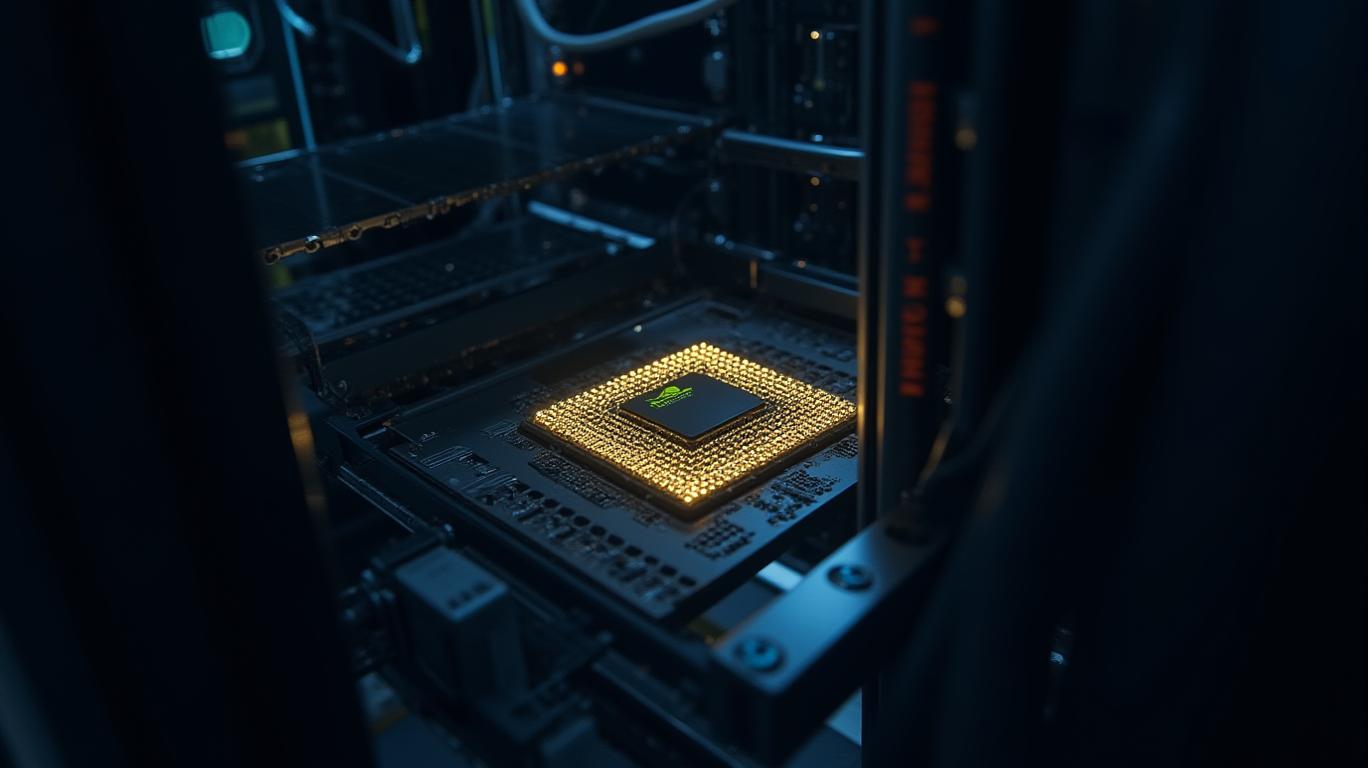NVIDIA's Crossroads: Navigating Downgrades to Capitalize on AI's Inflection Point
The recent downgrades of
by HSBC and Summit Insights have sparked heated debate about whether the AI chip giant’s stock plunge signals a structural slowdown or a fleeting misstep. With shares down 26% since early 2025—amplified by a 5% drop after HSBC’s “Hold” rating and a 4.8% decline following Summit’s similar call—the market is pricing in near-term risks like margin pressure, geopolitical headwinds, and rising competition. Yet beneath the noise lies a critical question: Are these headwinds overblown, or do they truly justify reduced valuations? For investors, the answer hinges on whether they can separate the transient from the transformative in AI’s evolution.
The Near-Term Storm: Downgrades and Their Catalysts
HSBC’s concerns center on three pillars: GPU pricing power erosion, transition phase uncertainty, and valuation risks. The firm points to stalled ASP growth for NVIDIA’s B-series GPUs, citing increased competition from DeepSeek’s cost-effective H800 chips and potential demand saturation among hyperscalers. Meanwhile, Summit’s downgrade highlights geopolitical fallout—U.S. export controls have halved NVIDIA’s China sales, while Huawei’s Ascend 920 chip threatens to carve out a niche in AI inference. These factors, compounded by a $5.5B inventory write-down for unsold H200 chips, have fueled margin concerns.
Yet these risks are not unprecedented. NVIDIA has long navigated cyclical challenges, and its Q4 2025 results—$39.3B in revenue, up 78% year-over-year—demonstrate enduring demand for its AI infrastructure. The question is whether the current slowdown justifies its forward P/E of 22.7x, which remains elevated but not irrational for a growth leader.
The Long-Term Case: AI’s Inflection Points Favor NVIDIA
To dismiss NVIDIA as overvalued is to ignore the structural forces reshaping AI adoption:
Supply-Demand Equilibrium in GPUs
While hyperscaler spending may cool from its 2024 peak, the shift from AI training to inference is a tailwind, not a headwind. NVIDIA’s H100/H200 chips dominate training workloads, but its software stack (CUDA, Omniverse) and partnerships (AWS, Microsoft Azure) ensure it captures adjacent markets like edge computing and multi-cloud integration.AI Efficiency Trends
The move toward agentic AI—self-optimizing systems—requires robust compute architectures. NVIDIA’s Blackwell chips, paired with its AI Blueprints framework, position it to lead in this next phase, where efficiency trumps brute force.Non-GPU Revenue Streams
NVIDIA’s diversification into robotics (e.g., partnerships with Toyota, Amazon’s warehouse automation) and AI software services (Llama Nemotron, Siyuan) offers a new revenue engine. Its Q4 automotive revenue rose 103% year-over-year, hinting at this shift.
These inflection points underscore why 37 of 43 analysts still rate NVIDIA a “Strong Buy”: its ecosystem dominance—spanning hardware, software, and developer communities—is unmatched. Even in a slowdown, its 112.33% return on equity and fortress balance sheet ($43.2B cash) provide resilience.
Why Now Could Be a Buying Opportunity
The market’s myopic focus on near-term GPU demand risks overlooking three critical realities:
China’s AI Infrastructure Buildout
Despite export controls, Chinese firms are not abandoning NVIDIA. Alibaba’s $72B capex raise in 2025 includes significant AI spend, and DeepSeek’s success hinges on NVIDIA’s ecosystem (its models run on CUDA). A post-election U.S.-China détente could unlock pent-up demand.Software as the New Profit Engine
NVIDIA’s shift from selling chips to licensing AI models and tools (e.g., Llama 4) could boost margins. Software typically commands 80%+ gross margins versus ~70% for GPUs.Robotics: The Next AI Frontier
The $500B Stargate Project—a joint U.S.-EU initiative for advanced AI infrastructure—directly funds NVIDIA’s Blackwell supercomputers. In robotics, NVIDIA’s partnerships with Siemens Healthineers (surgical robots) and Hyundai (autonomous vehicles) signal a $100B addressable market by 2030.
Conclusion: A Volatile Holding, But the Sector’s Anchor
NVIDIA’s stock is a high-beta play—sensitive to AI adoption cycles, geopolitical winds, and quarterly volatility. Yet its moat—built on 30 years of GPU innovation, software leadership, and an AI stack that powers 90% of large language models—is impenetrable for rivals like DeepSeek or Huawei.
The downgrades of 2025 are a buying opportunity for long-term investors, not a sell signal. With a forward P/E of 22.7x and a 55.85% profit margin, NVIDIA is priced for near-term headwinds but not its long-term potential. The inflection points—software diversification, robotics, and global AI adoption—are too vast to ignore.
Action: Aggressively accumulate NVIDIA on dips below $120—HSBC’s downgraded target—while keeping a close eye on China-U.S. trade relations and the rollout of Blackwell-based supercomputers. The AI revolution isn’t over; it’s just entering its most lucrative phase.

Comments
No comments yet